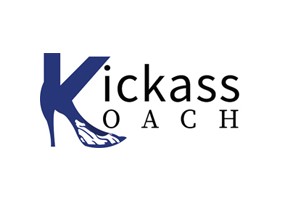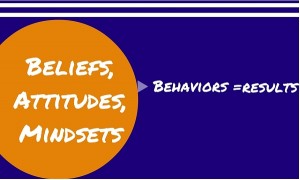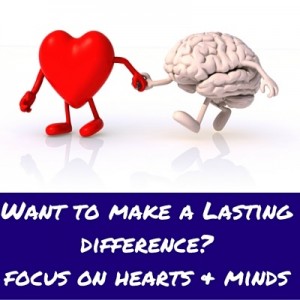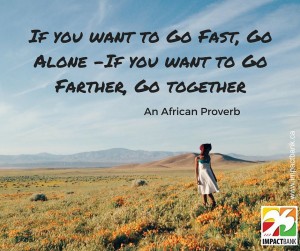Listen to this and other episodes
ImpactBank’s The Kickass Koach podcast supports emerging senior leaders who want to quickly master the art and practice of leadership. When you were promoted into a senior position, if you’re like most people, you were immediately excited b y the opportunity. You also soon realized the immense challenge ahead of you.
y the opportunity. You also soon realized the immense challenge ahead of you.
You quickly had feelings of being lost, overwhelmed and very alone. It is completely understandable – you need to find your leadership rhythm. We help you find your leadership presence – one that will both command a room and warm the hearts so people truly enjoy following you – then you will know what it feels like to really make an impact.
ImpactBank’s “ON YOUR MARK” 3 month program focuses exclusively on the first 90-180 days to give you a powerful start as a new senior leader. ImpactBank’s “THE IMPACT BUMP” 18 month program offers a follow-up supporting you as you navigate the new role and master the art and practice of leadership.
Episode 36: What lies behind the SOBs?
How is your definition of diversity limiting your ability to leverage it?
Diversity-thinking in leadership pays significant dividends. Last week we suggested you consider experimenting by noticing and getting curious about the specific observable behaviors of your direct reports. What did you learn?
It is your responsibility to be moving the needle in your office, agency or organization. You are no longer the one who is producing the results – you are charged with influencing and holding the space for those who do. SO your first challenge is always to be a careful and detailed observer – of people, interactions, results. Every time you interject yourself into the mix, you change things dramatically SO take twice as much time observing and planning than you do in acting.
Some of you are feeling the pressure to clean-up a bad situation you inherited. Some of you were promoted to carry on the great work of your predecessor. Some of you were promoted without much direction and feel like you are just filling a seat. Regardless, you need to figure out what makes you effective in this new kind of role.
Leadership is different in ways you couldn’t possibly have expected. AND what makes it more interesting is that each and every team requires a different touch and will be a different feel.
AND still YOU need to get the results. If you haven’t noticed yet, you’ll soon see that simply focusing on the results won’t change them – at least not in the way you desire.
MOVING THE NEEDLE.
Last week we discussed the behaviors and how you can make the short term improvements if there is something urgent or critical that must change. However if you really want to make a lasting impact, you have to figure out what’s happening behind or beneath the behaviors AND that’s our focus this week.
If you want want to go fast, go alone. If you want to go far, go together.
-African Proverb
Changing Hearts and Minds
Why?
Last Week we explored examples of how as leaders we may influence changes to behaviors – in the short term. Today the emphasis is on making lasting change – improvements that stick. When you understand this and can apply it, you will be an exceptional leader who will make a big difference in your agency, profession and even your community.
 This requires more than effort – it requires painstaking reflection, observation and precise thoughtful action. Since most people are more reactive you will need to develop a firm leadership discipline. The good news is that once you see the changes starting, you will be both surprised and delighted. When our own disciplined approach feels good it becomes both energizing and infectious.
This requires more than effort – it requires painstaking reflection, observation and precise thoughtful action. Since most people are more reactive you will need to develop a firm leadership discipline. The good news is that once you see the changes starting, you will be both surprised and delighted. When our own disciplined approach feels good it becomes both energizing and infectious.
Last week we talked about antecedents, modeling and regulation. This week we are talking about changing hearts and minds by using – in part – all three of these.
OH, and while this requires more time and effort for the leader initially, it will save so much more time in the long-run because the changes will STICK and become the organizational MODUS OPERANDI.
The Flow of Understanding
- Your attitude is determined by what you believe, which in turn creates your mindset.
- Your Mindset then determines your behavior.
- To understand your mindset examine the results you produce.
Yes it moves in a circle – which means you need to be comfortable at each of the touch points in the flow.
What You Can Do
- Observe and Be curious about the behaviors you are witnessing – either with solid creative inquiry or further observation see if you can dig one layer deeper where they may be richer and more
 fertile ground for understanding.
fertile ground for understanding. - If you are needing to influence the behavior of one person, set up open dialogue sessions to get to know them, build trust and develop a firm appreciation and awareness about how you may influence their behaviors. What are some of the attitudes, beliefs or mindset that are creating the behaviors you want to chance? DON’T forget to look at your own as well and how you may be contributing to the behavior. (If it’s a group – you may want to bring in a systems coach to support you in bringing them together to explore further OR you could carefully attempt the same approach as I suggested here for an individual).
- Now for the experimental part. After each conversation, track what you learned. What patterns did you notice? What beliefs jumped out? What may be triggered you? Where do you see connections between attitudes, beliefs and mindsets with the behaviors? Don’t rush this part – you are not trying to solve everything immediately – leadership is not an exact science and it requires patience to develop a winning strategy.
- After a few days, at least, of reflection on what came out of the conversations, you are ready to pull the puzzle pieces together. We’ll talk more about that next week.
Are you so focused on conclusions & judgments you are unable to clearly see what is behind or beneath them?
NEXT WEEK: we’ll look at more of the interpersonal aspects of digging more deeply into diversity.
ImpactBank Diversity Program: The Diversity Dividend
Would you or your organization benefit?
We tailor the program to the organization’s and leader’s specific needs and current challenges.
Are there conflicts that persist between stakeholder groups or within specific work groups?
Do you routinely experience poor compliance rates? (In other words, are there requirements that workers just fail to meet on a regular basis? Do you have poor attendance or high attrition rates? Are there constantly mistakes made in working with stakeholders? Are acceptable levels of service only met by some members of the team or not consistently across the team?)
Do you find yourself frustrated because you have to say the same things over and over and you can’t get people to take critical requirements seriously?
Are there conflicts bubbling beneath the surface?


